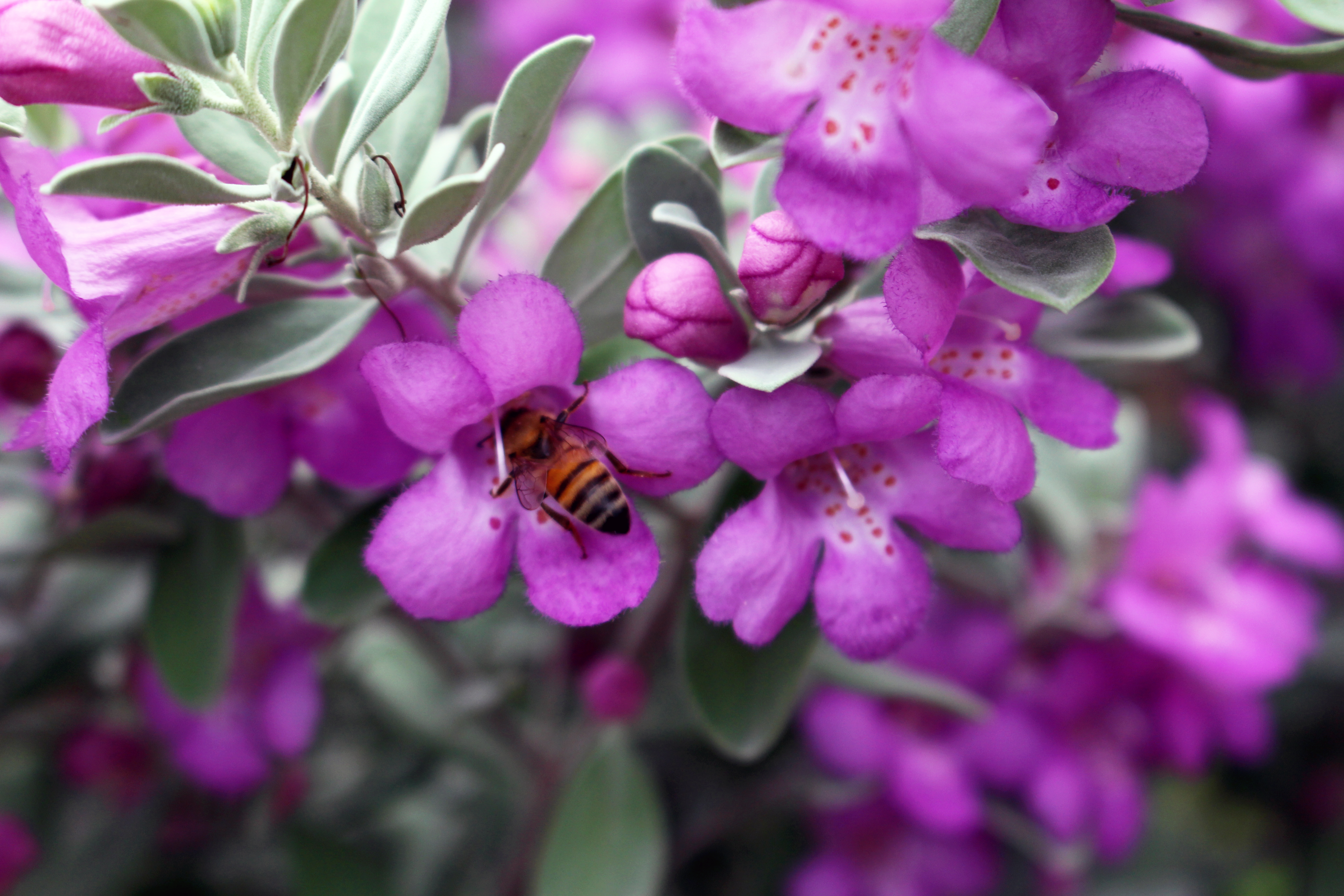Farm & Ranch
B-E-E-ING A Beekeeper – Celebrating the triumphs and understanding the trials

By Jessica Crabtree
Raising honeybees, like anything else, will present you with trials and triumphs, things that will fail while other parts will flourish. Now that we have established your needs as a new beekeeper and goals in the first year, we now discuss the things that can go wrong, why and how to fix it, as well as why things are going so well. For this we consult fellow beekeeper and Red River Beekeepers Association president, Kerry Roach.
Challenges
Roach described honeybees as being “delicate creatures.” If the colony is strong, as a colony of many bees, they are a unit. However, the individual bee is very susceptible to an array of frailties. That, in and of itself, is the challenge and what causes bees to die. Roach explained the challenge for the beekeeper is to minimize the adverse effects in nature. Contrary to popular belief, honeybees can freeze, drowned and fall victim to the natural effects of weather. When the elements strike, Roach said, “They [honeybees] have to fly and come back, and figure out where their hive is, where their place of safety is.”
Additional dangers to the tiny creatures are wind, rain and flooding. Of course, like anything else, these insects are not without predators. “Honeybees are very tasty and palatable to birds, animals such as bears and skunks, which are all natural predators,” Roach described. Other predators include spiders, “Honeybees must watch for spider webs. Webs simply offer another natural danger.” One of a beekeeper’s largest challenges is minimizing those natural dangers as much as possible. Naturally, honeybees live between six and eight weeks. However, the worker bees literally work themselves to death.
Beekeepers in our state possess their own beekeeping challenges. That comes in the form of Texas’ unpredictable weather. “In Texas, our main issue is heat in the summer. A beekeeper here must give proper ventilation to a hive. They can’t just keep the box closed up. The hive needs air to circulate through it,” Roach shared. This can be done by offsetting the hive boxes to create a space for air to circulate.
To read more pick up a copy of the October 2017 NTFR issue. To subscribe call 940-872-5922.
Farm & Ranch
Managing Show Cattle Through The Winter

By Heather Welper
Husband and wife duo, Heather and Calvin Welper, are the Co-Owners and Operators or Two C Livestock, located in Valley View, Texas.
The pair’s operation has a show cattle focus where they raise and sell purebred heifers of all breeds and club calf Hereford steers.
When it comes to show cattle, the Welpers know a thing or two including how to prepare for the cold winter months and the Texas major show season run.
To read more, pick up a copy of the November edition of North Texas Farm & Ranch magazine, available digitally and in print. To subscribe by mail, call 940-872-5922.

Farm & Ranch
Double M Ranch & Rescue

By Hannah Claxton, Editor
As the sun rises each day, so do the dozens of mouths that Meghan McGovern is responsible for getting fed. Rather than the sounds of a rooster crowing, McGovern hears the bellows and bleats of a variety of exotic deer, the chortle of kangaroos, the grunts of water buffaloes, and the chirps of a lemur.
Nestled against the banks of the Red River, the Double M Ranch and Rescue, with its high game fences and deer sprinkling the landscape,s its in stark contrast to the surrounding ranches.
“Having deer is kind of like eating potato chips- you can never actually have just one,” said McGovern with a laugh.
McGovern has several herds to take care of- fallow deer, axis deer, water buffalo, goats, and bison. In smaller numbers, there’s also a few kangaroos, a lemur, a potbelly pig, a pair of zebras, a watusi, and a few horses.
To read more, pick up a copy of the November edition of North Texas Farm & Ranch magazine, available digitally and in print. To subscribe by mail, call 940-872-5922.

Farm & Ranch
Acorn Toxicity

By Barry Whitworth, DVM, MPH
With the prolonged drought, most pastures in Oklahoma end up in poor condition. With the lack of available forage, animals may go in search of alternative foods.
If oak trees are in the pastures, acorns may be a favorite meal for some livestock in the fall. This may result in oak poisoning.
Oak leaves, twigs, buds, and acorns may be toxic to some animals when consumed.
To read more, pick up a copy of the November edition of North Texas Farm & Ranch magazine, available digitally and in print. To subscribe by mail, call 940-872-5922.

-

 Country Lifestyles2 years ago
Country Lifestyles2 years agoScott & Stacey Schumacher: A Growth Mindset
-

 Country Lifestyles8 years ago
Country Lifestyles8 years agoStyle Your Profile – What your style cowboy hat says about you and new trends in 2017
-

 HOME8 years ago
HOME8 years agoGrazing North Texas – Wilman Lovegrass
-

 Outdoor10 years ago
Outdoor10 years agoButtercup or Primrose?
-

 Country Lifestyles5 years ago
Country Lifestyles5 years agoAmber Crawford, Breakaway Roper
-

 Country Lifestyles9 years ago
Country Lifestyles9 years agoJune 2016 Profile – The man behind the mic: Bob Tallman
-

 Country Lifestyles8 years ago
Country Lifestyles8 years agoDecember 2016 Profile, Rusty Riddle – The Riddle Way
-

 Equine1 year ago
Equine1 year agoThe Will to Win




